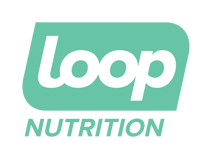The Power of Peanut Butter: A Dietitian's Perspective
As a registered dietitian, I often hear from clients unsure whether peanut butter is a good choice for their diets. Most of them worry about its high-fat content and the potential impact that it can have on their weight.
But as someone who's dug deep into the research and seen first-hand the positive effects of maintaining balanced nutrition, I'm here to spread the truth about peanut butter and share its benefits with you!
Nutritional Profile of Peanut Butter
Let's start with understanding the nutritional makeup of peanut butter.
Peanut butter is surprisingly packed with essential nutrients, making it a nutritious addition to your favorite meals and snacks. With 8 grams of protein per serving, it supports muscle growth and repair.
Rich in heart-healthy fats like monounsaturated and polyunsaturated fats, it can help lower bad cholesterol levels and reduce the risk of heart disease(1,2). Plus, its fiber content promotes digestive health and blood sugar regulation and aids in weight management by helping you feel fuller for longer.
But what really sets this spread apart is its abundance of micronutrients. It's packed with significant amounts of vitamin E, magnesium, potassium, and antioxidants like resveratrol, all of which play vital roles in overall health and well-being. These micronutrients contribute to everything from immune function to bone health to skin health and cognitive function.
What About the Calories?
With around 190 calories per serving, peanut butter is calorically dense. However, there are still plenty of ways to incorporate it into a balanced diet, and these calories can easily fit into most weight management meal plans.
(Remember: the satiating properties of peanut butter can still help prevent excessive calorie intake throughout the day!)
Unsure how to eat the foods you love while working toward your weight loss goals? Click here to book a free consultation with a Loop Registered Dietitian and learn how!
What Peanut Butter Should I Buy?
There are TONS of options to choose from in grocery stores, so how do you know which peanut butter product to buy?
In the United States, there are specific rules for what can be called "peanut butter." According to FDA regulations(3), peanut butter must contain at least 90% peanuts, with salt, sweeteners, and hydrogenated vegetable oils being the only other allowed ingredients.
It's important to note that major peanut butter brands in the U.S. use fully hydrogenated oils, which means their products have zero grams of trans fat per serving.
Natural peanut butters, which only contain peanuts, meet these standards and can be labeled as peanut butter. However, if other ingredients, like palm oil - a healthful fat source (4) - or flavors are added, the product must be labeled as a peanut butter spread (even if it still has at least 90% peanuts and a similar nutritional profile.)
Natural vs Traditional Peanut Butter
Now, let's compare the nutritional differences between traditional peanut butter (smooth style without salt) and natural peanut butter (which contains only peanuts):
Peanut butter (from USDA Nutrient Database):
| Serving Size | 2 Tablespoons |
| Total Fat | 16g |
| Saturated Fat | 3g |
| Sodium | 5mg |
| Sugar | 3g |
| Protein | 7g |
Natural peanut butter (Top selling brand):
| Serving Size | 2 Tablespoons |
| Total Fat | 16g |
| Saturated Fat | 2g |
| Sodium | 0mg |
| Sugar | 1g |
| Protein | 8g |
Aside from the 1g difference in saturated fat from added palm oil, they're pretty similar in nutrition.
So, feel free to choose the one that fits your budget and tastes best for you!
In conclusion...
Peanut butter is a nutritional powerhouse that is valuable to a balanced diet. Its nutrient-rich profile makes it a great addition to meals and snacks, and enjoying it in moderation can offer numerous health benefits.
As a registered dietitian, I wholeheartedly recommend including peanut butter in your eating plan. Whether you spread it on toast, mix it into smoothies, or enjoy it by the spoonful - Your body will thank you for it!
Sources
1. Parilli-Moser I, Hurtado-Barroso S, Guasch-Ferré M, Lamuela-Raventós RM. Effect of Peanut Consumption on Cardiovascular Risk Factors: A Randomized Clinical Trial and Meta-Analysis. Front Nutr. 2022;9:853378. Published 2022 Apr 1. doi:10.3389/fnut.2022.853378
2. Guasch-Ferré, M., Guasch-Ferré, M., Tessier, A. J., Petersen, K., Sapp, P., Tapsell, L., Salas-Salvadó, J., Ros, E., Kris-Etherton, P., & Kris-Etherton, P. (2023). Effects of Nut Consumption on Blood Lipids and Lipoproteins: A Comprehensive Literature Update. Nutrients, 15(3), 596.
3. U.S. Food and Drug Administration. CFR - Code of Federal Regulations Title 21. Part 164 -Tree Nut and Peanut Products. Sec. 164.150 - Peanut Butter. Available from: https://www.accessdata.fda.gov/scripts/cdrh/cfdocs/cfcfr/CFRSearch.cfm?fr=164.150& SearchTerm=peanut%20butter. Accessed 4/1/2024
4. Sulaiman NS, Sintang MD, Mantihal S, et al. Balancing functional and health benefits of food products formulated with palm oil as oil sources. Heliyon. 2022; 8 (10): e11041. Published 2022 Oct 11. doi:10.1016/j.heliyon.2022.e11041.










